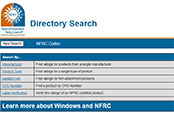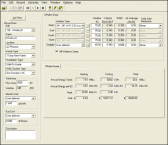
Energy Rating Systems and Tools
The energy rating systems and tools are available to help you choose energy-efficient windows. By using these tools, you can be sure that you are choosing windows that will help you save energy and money.
Even the expert eye cannot easily tell an efficient window from a conventional window. That is why energy ratings, endorsement programs, and consumer incentives play an important role in creating awareness for window energy efficiency among consumers, builders, architects, and performance standard programs.
Window Rating Systems
The NFRC and ENERGY STAR labels are the most recognizable energy efficiency ratings for windows, doors, and skylights. NFRC rates the energy performance of these products using a rigorous third-party certification system. The NFRC rating is mandatory throughout the United States as proof of energy code compliance. The EPA’s ENERGY STAR program is a voluntary program that uses the NFRC ratings to determine qualified products.
NFRC Certification and Labeling
ENERGY STAR for windows, doors, and skylights
Home Rating Systems
The adoption of energy-efficient windows in new construction has mainly been driven by mandatory building energy codes. In recent years voluntary programs and various sustainable design programs have gained increasing traction as well. Some of these programs are listed below.
Advanced Tools
The adoption of energy-efficient windows in new construction has mainly been driven by mandatory building energy codes. In recent years voluntary programs and various sustainable design programs have gained increasing traction as well. Some of these programs are listed below.

NFRC’s Certified Products Directory (CPD)
The NFRC Certified Product Directory provides a list of NFRC-certified products. You can search by manufacturer, CPD number, window type, or performance ratings.

LBNL’s RESFEN
RESFEN is used for calculating the heating and cooling energy use of windows in residential buildings. Using a computer program such as RESFEN to compare the performance of window and skylight options allows you to customize the calculation by adding heating and cooling costs for your specific climate, house design options, and utility rates. The user defines the house with a series of selections from a menu: location, heating, and cooling system type and efficiency, utility rates, floor area, window area, window orientation, interior/exterior shading, etc. A specific window or set of windows for each orientation is selected and specified by their U-factor, SHGC, and air leakage rate. The program then calculates the annual heating and cooling energy use and cost as well as peak heating and cooling loads. It is designed to place different window types in different orientations.

NREL’s BEopt
The BEopt™ (Building Energy Optimization) software provides capabilities to evaluate residential building designs and identify cost-optimal efficiency packages at various levels of whole-house energy savings along the path to zero net energy.